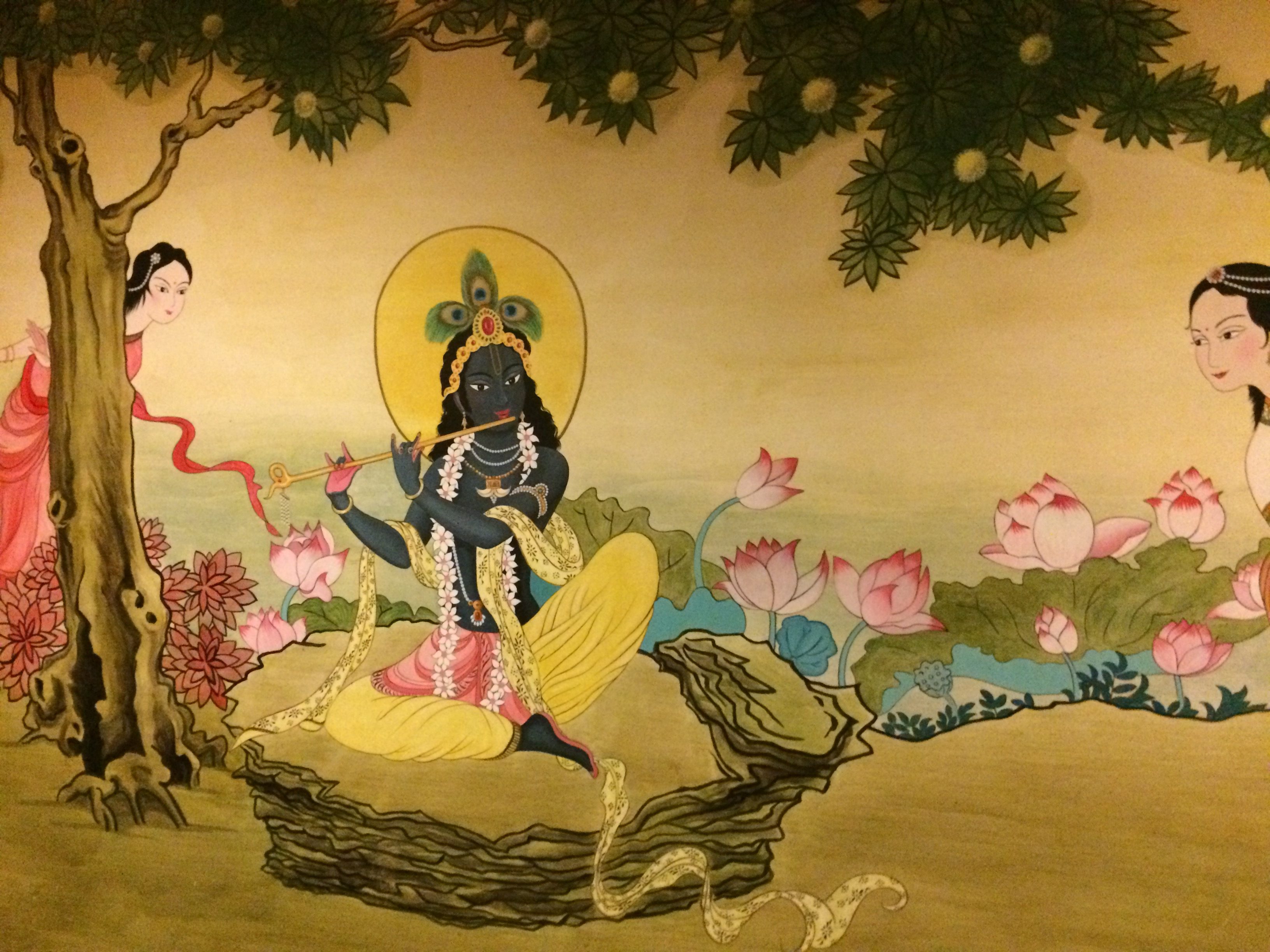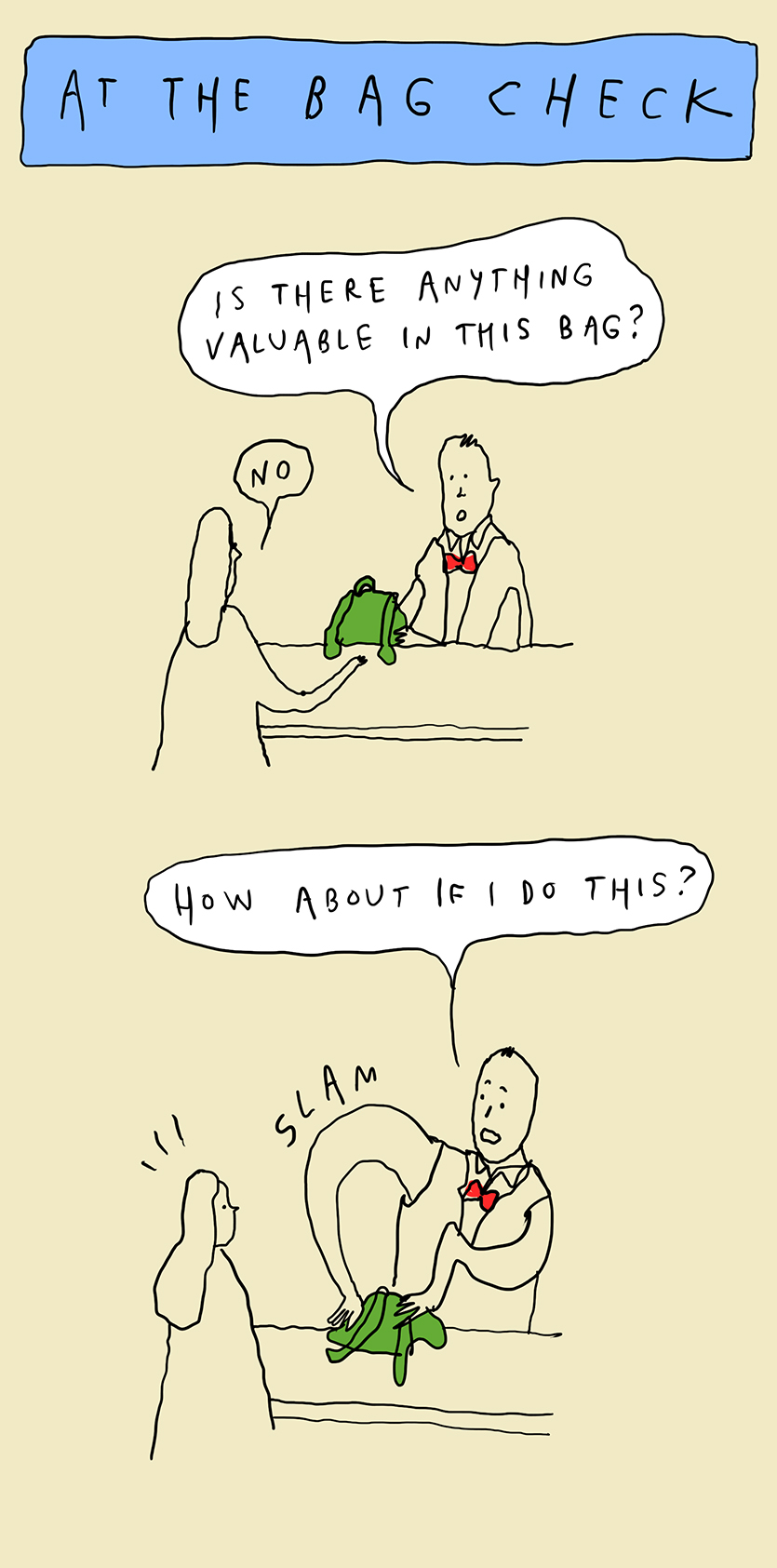New York City, December 19, 2017
 ★★★ The air was mild but not ominously so. The six-year-old could get away with wearing athletic shorts, with pajama pants posing as running tights underneath. Softly rumpled clouds slid by, allowing golden light through. The light swelled and then, very slowly, deflated again. The afternoon did not feel quite as warm as the promise had been.
★★★ The air was mild but not ominously so. The six-year-old could get away with wearing athletic shorts, with pajama pants posing as running tights underneath. Softly rumpled clouds slid by, allowing golden light through. The light swelled and then, very slowly, deflated again. The afternoon did not feel quite as warm as the promise had been.
Conservationists Are Our Finest Killers

Image: KOMUNews via Flickr
It’s surprisingly sad to see insects writhing in the sticky goo inside their radiant orange, A-frame houses. Close to death, and most limbs paralyzed in the glue, they rotate one or two legs slowly, life draining. There’s always collateral damage in conservation, no matter how small.
If the Missouri Department of Conservation’s pheromone traps succeed, then it catches a brand new infestation of the dreaded, westward-migrating gypsy moth, which signals a coming catastrophe for Missouri’s oak trees. If they fail, they take somewhere around 100,000 gnat, roach, spider, ant, katydid, harvestman, mantis, cricket, bee, moth, wasp, and one or two hummingbird lives in vain.
I’m not weeping for the insect lives lost in my entry-level conservation post. But as they die, they testify to the conservation world’s present challenge: can we kill things fast enough to save nature?

Photo by Robert Langellier
The nature of nature has changed. On the subject of invasive species, we at some point crossed a threshold from which we can’t return. In order to preserve nature now, we must intercede, control it with the human hand. “People want it to be natural, for everything to be natural,” said Missouri forester Mark Grueber. “And that’s a joke. If you let something grow natural these days, you’ve got nothing but invasives.”
In many places, particularly any land near any kind of development, letting the land grow wild will result in the short-form takeover of invasive species. Here in Missouri that means bush honeysuckle, zebra mussels, feral hogs, emerald ash borer, lespedeza, tree of heaven, and myriad others. So conservationists spend the vast majority of their energy killing them. There is either unnatural nature or natural non-nature. Nature as we like to imagine it is no more.
Here's The Nutcracker, Ya Filthy Animals

Image: Ray Beaulieu via Flickr
Last year I refused to write about The Nutcracker, which was fine and normal of me. I said it’s the kind of thing you get sick of, which I stand by. Here’s the thing, of course: The Nutcracker is obviously a masterpiece, but you do get sick of it. If you disagree, then please listen attempt to listen to The Nutcracker sometime in, oh I don’t know, May, and tell me how that works for you. But I caved this holiday season, because I am both a big, weak baby, and also because I actually went to go see The Nutcracker for the first time in my life.
The Nutcracker, as I hope you know, was composed by Pyotr Tchaikovsky, the king of melody himself. The story for The Nutcracker comes from an E.T.A. Hoffman short story called The Nutcracker And The Mouse King which was then adapted by Alexandre Dumas (the same, yes, as the one you’re thinking). Don’t remember the story? Well, it, uh, doesn’t really matter at all, but it is about a girl who falls in love with her Christmas toy, a hot nutcracker, who kills a big rat and then takes her on a journey to a fantasy land where then they (the characters) basically watch a movie that you (the audience) also watch.
It premiered in ballet form in 1892, one of the composer’s later works given he died about ten months in October of 1893, and it had only some success at the time of its debut. Here’s the thing: I agree. Those at the time said the acts were uneven (yes) and the shift from the battle between the Rat King and the Nutcracker to fantasy world is abrupt (yes, same) and that there are too many children (agree!!). I still had an incredible time seeing The Nutcracker because ballet is deranged and I’ve never seen so many lithe adults in my whole life. If you have never seen a ballet before, let me tell you what it’s like. You know how when you go to see a basketball game live and you are extremely keyed into how loud their shoes are? Ballet is like that, but with toe shoes. And if you’ve never seen a basketball game live, then I don’t know what to tell you. Just imagine sounds for all of these.
Govinda's Vegetarian

In Downtown Brooklyn, in an unappealing wedge of commercial real estate—banks and pharmacies and offices, ceaseless construction, the snarl of traffic along Flatbush Avenue, the gleaming curves of the Barclays Center in the distance—there is a Hare Krishna temple that serves a vegetarian lunch buffet, Monday through Friday, noon to 3:30. The food is good, but more importantly it’s pretty cheap: two items for $7, three for $9, four for $10, a “complete meal”—the entrée of the day, plus all the sides—for $12. My favorite is the eggplant parmesan, served every Thursday; I’m also partial to the breaded tofu with green sauce (Tuesday). The nut loaf (Wednesday) is a little strange, but there’s always something else to choose: channa masala, black-eyed peas, cauliflower, spinach, potatoes, rice, kale, quinoa, beet salad, samosas. The cheesecake is $4, and exquisite. The bread is free.
The buffet, called Govinda’s Vegetarian Lunch, takes place in a dining hall in the basement of the temple, located at 305 Schermerhorn Street. The hall is windowless, but the room is painted brightly, in green and pink and orange; on one wall is a mural of blue-skinned Krishna playing the flute for a trio of lusty milkmaids. Sitars and chants drone from speakers in the corner. Every lunchtime, the hall fills with a cross-section of Downtown Brooklyn—bankers, bureaucrats, construction workers—as well as a smattering of Hare Krishnas, with their saffron robes and shaved skulls. Sometimes there is a long line. The cuisine can be a little incongruous—Indian meets Italian—but nobody seems to mind.
New York City, December 18, 2017
 ★★★ The sunrise made no difference. Around the edges of the schoolyard, there was still some exhausted snow. The thaw had been just enough to make it necessary to think about which coats to use. The real arrival of daylight took a few more hours, as the clouds thinned. To the north was a precise blue and to the south was an incomprehensible white haze; off to the east and the west were fuzzy grays. It was too warm to bundle up but too creepingly damp and chilly to ignore or enjoy. The haze remained, pearly and enchanting up close, grimy in the distance.
★★★ The sunrise made no difference. Around the edges of the schoolyard, there was still some exhausted snow. The thaw had been just enough to make it necessary to think about which coats to use. The real arrival of daylight took a few more hours, as the clouds thinned. To the north was a precise blue and to the south was an incomprehensible white haze; off to the east and the west were fuzzy grays. It was too warm to bundle up but too creepingly damp and chilly to ignore or enjoy. The haze remained, pearly and enchanting up close, grimy in the distance.
Falu Red, The Color of Bucolic Barns and Mummified Swedes
.
.
.
.
.
.
.
.
.
According to legend, there was once a goat named Kåre who lived with his shepherd boy in rural Sweden. One day, Kåre returned home with his horns stained a bright, mineral red. Instead of being frightened by his newly Baphomet-looking livestock, the boy summoned all his entrepreneurial impulses and set to work figuring out how he could make money from this occurrence. His goat had fallen headfirst into a pile of earthly riches, discovering a patch of copper-laden land, russet soil and dusty yellow stones.
This site would become the famous copper mines of Falun, the source of much of Sweden’s wealth throughout the Middle Ages and the reason we have the term “barn red,” for it was here that Swedes discovered the preserving and protective properties of copper, iron ochre, silica, and zinc. Mixed with linseed oil, these minerals became a deep warm red paint, which was applied to the sides of houses and barns throughout Scandinavia and later, the east coast of America.
When Robots Write Our Emails

Image via Pixabay
Crystal is refusing to take my calls, preferring the anonymous screen that email provides. And why would they, when the premise of their whole service is to provide a foolproof way to write better emails, and to, as their website claims, “help people understand and communicate with each other better at work and in life.” Crystal is a browser extension that mines your data—any social media profiles and your email inbox—to create a personality profile of your preferred communication preferences. In turn, it provides suggestions on tone, greetings, and content. Advice such as instead of writing “that’s fine” which may come off as disinterested, write: “that’s great.” Instead of the ambiguous “let me know” write: “let me know if you can make it by 5pm tomorrow.”
When I first email Luke, who works at Crystal, he emails back immediately prompting me to send him over any questions I had via email. When I suggest a phone call, he ghosts me. I give in and send over my questions and get a reply the same day. The whole time I’m wondering if Luke—or the browser extension, Crystal—can tell through my tone that I’m skeptical of the implications of such a service. I choose my words carefully. What parts of the email are Luke, and what parts are Crystal’s suggestions?
K Dallas, "Aurora Borealis (comes in you)"
No matter how bad things got over the past year there was still a little part of me that was able to deny reality, to imagine that this was some illusion or temporary blip. Even though I knew deep in my heart that it was all happening, I took comfort in the occasional recourse of fantasy, of allowing myself to believe that what was going on all around me was somehow false. But now I know there’s no way out. Now I know it’s official. Now I cannot help but face the fact that this is real: This is who we are. Anyway, here’s music. Enjoy, if that’s still possible.

